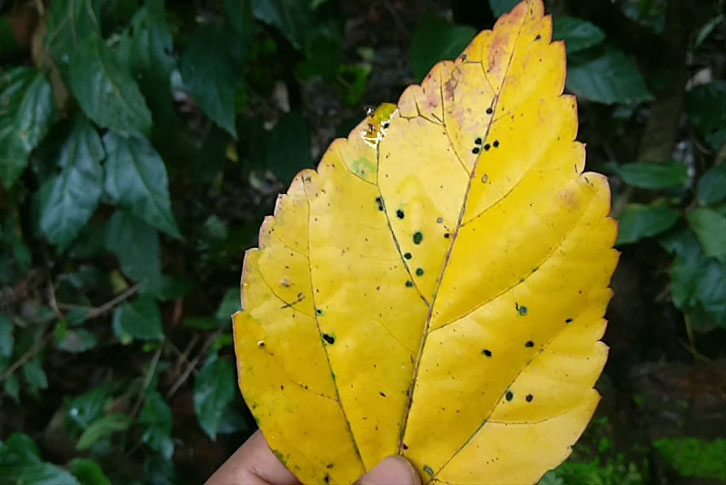How to Grow Turnips From Seed
Introduction
Besides being great accompanying vegetables such as carrots and radishes, turnip is one of the easiest root vegetables to grow for beginners. You can plant and grow it whenever you want – season and time don’t matter according to the type you choose. Planting, growing, and caring are effortless. Extra care may happen in some special types, but in general, it’s easy.
Turnip also makes a great addition to various recipes, such as fresh salads in summer, and you may want to grow it in your place. You can eat it raw or cooked, or you can eat it pickled. Overall, it will benefit health and blood circulation. In this article, you will learn how to grow turnips from seed and other factors. Before starting, let’s learn what it is.
What Is Turnip?
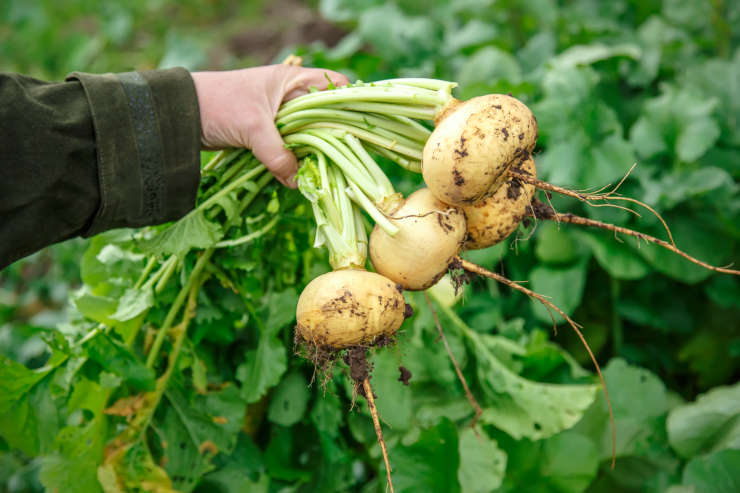
Turnip is a root vegetable that can grow all year, but autumn months are recommended. The name can refer to different types, but in general, it’s called purple or white turnip. Its relatives are radishes and arugula – mainly the Brassica family. Its believed that they were originally from Eastern Asia but were so popular in the Roman Empire that they became worldly-known. Now, you can see it worldwide – in gardens, greenhouses, farms, restaurants, etc.
The size affects taste directly. Big and older ones can be bitter and generally used to making juice. Small and younger ones are sweet and can be peeled easily. Now that we’ve learned about this root vegetable, let’s learn about types first and then the growing difficulty level.
Popular Turnip Types
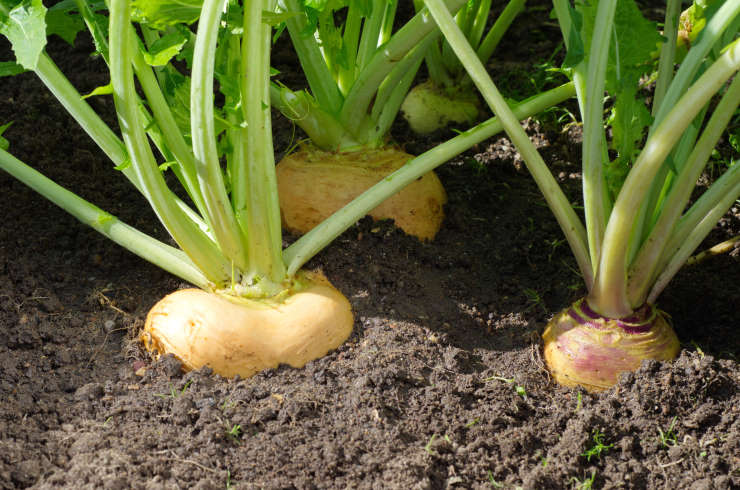
Turnip is a root vegetable that has different types to grow. Generally, you can see the purple and white ones in the supermarket or bazaar. Let’s take a look at them.
Purple-Top White Globe is the well-known type and can be seen in vegetable stalls. They can be harvested after 60 days and have a spicy taste that would make a great addition to salads and stews.
White Lady is white, as the name suggests, and can be harvested after 35 days. Its leaves are edible and can be used for salads.
Scarlet Queen is a dark pink-red color, as the name suggests. They are super crunchy and tasty. They can be used in salads, or you can eat them as pickled. It is mainly consumed as pickled in Eurasian countries.
Are Turnips Hard to Grow?
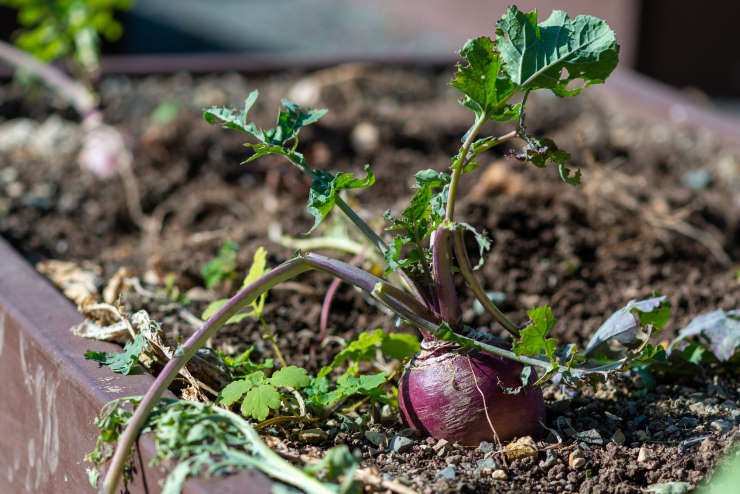
The answer is simple: no. As mentioned above, they are one of the easiest root vegetables to grow. They are fast-growing and don’t need extra care besides routine care. It’s easy to produce them. When you are a beginner and want to grow your vegetables but don’t know what to do, turnip will be an amazing choice.
Some vegetables have complicated and detailed growing and caring that may be difficult for you. And when you want to grow them, you would likely be stressed and think you’re not good at planting. Don’t worry, this root vegetable is not only easy to grow but also for planting, caring for, and harvesting.
How to Plant Turnip from Sprouting Top
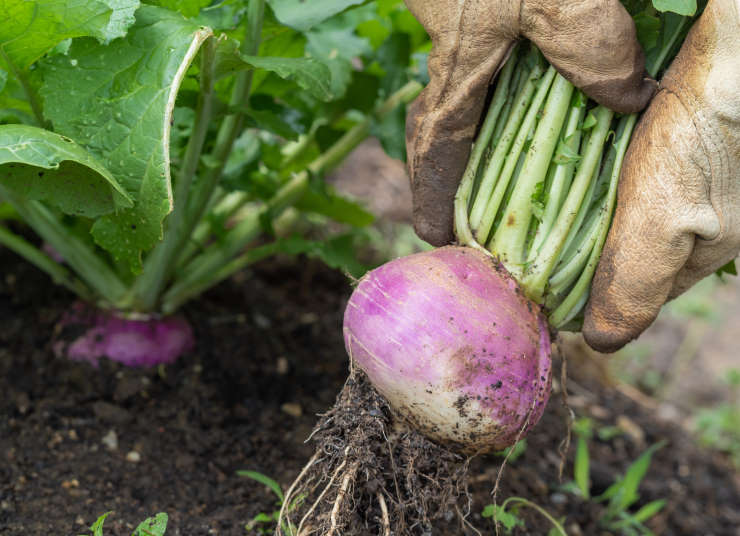
Sometimes, we forget the vegetables we’ve put in the fridge or storeroom. And then, they start to sprout. There is no need to throw them away – you can plant them from their sprouting top.
Following these steps would be helpful:
- Cut the sprout from the body.
- Turn the top cut side down.
- Put the sprout in a glass or bowl that contains water.
- Place it in a place that receives full sun.
- When you see the roots growing, you can start to prepare a container or pot.
- Using a rich mix of soil would be helpful.
- Dig a hole around 1-2 inches (2-5 centimeters).
- Give water immediately after planting, and keep watering regularly but be careful about overwatering. This may cause the plant to die.
These all needed steps to plant from the sprouting top. However, if you don’t have a sprouting top, you can grow it from seeds, too.
How to Prepare Turnip Seeds for Planting
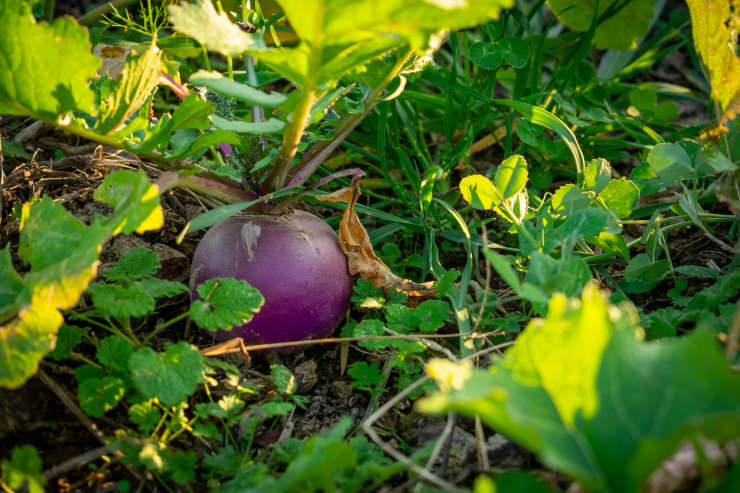
If you want to grow a turnip from seed, you need to do some preparation first. Firstly, you need to choose the type you want to grow – early and main crop. This will be good for them to thrive, and we’ll look at when is the best to plant them.
Following these steps would be good in preparing this root vegetable to grow:
- The seeds can be found in gardening stores, you can choose whichever type you want. After that, it’s up to you, but considering the season will be helpful.
- After purchasing, preparing the bed is easy. All you need to do is choose rich, loose, and well-draining soil. This will affect the whole process, especially germination. You can find more information in the “Soil” title.
- A 10-12 inches (25-30 centimeters) pot or container would be the best because turnip loves big places.
How to Grow Turnips from Seeds
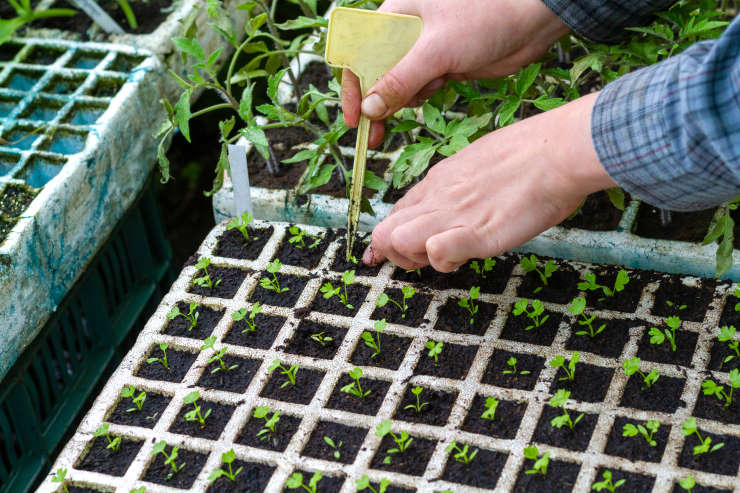
Now that we’ve learned how to prepare turnip seeds, we can start planting carefully.
- You can scatter the seeds randomly or can plant them in order. The choice is up to you.
- After scattering, some seeds can be so close. Apart from them, turnip loves larger spaces to grow. 4-6 inches (10-15 centimeters) will be good.
- If your space is limited, place the seeds according to your capacity. This depends on whether it’s a pot, part of the garden, etc.
- After putting the seeds, cover them with soil carefully and gently.
As mentioned, capacity is an important factor for turnip. If you have a garden and want to plant multiple seeds, placing them 12 inches (30 centimeters) apart would be the best. If your place is limited, 4-6 inches (10-15 inches) will work. Having limited space doesn’t mean you can’t plant them, but don’t worry.
The Best Way to Sow Turnip Seeds
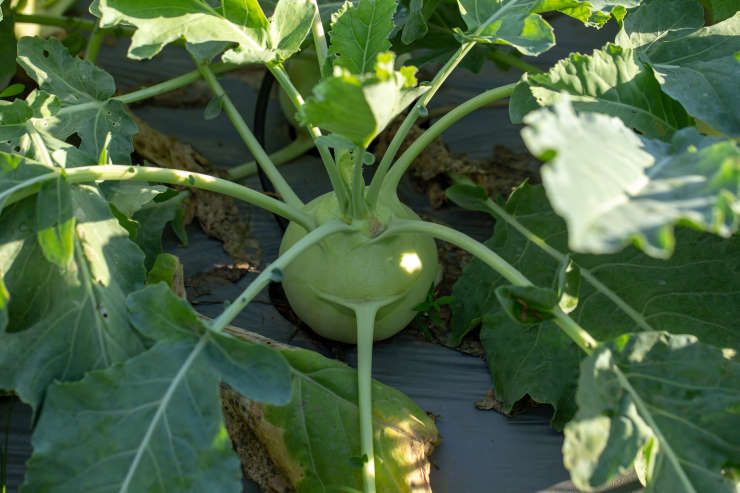
There are two methods to sow turnip seeds – scattering or planting them in order. The second one will take more time and requires patience; however, it is the best method.
The best way to sow this root vegetable’s seeds is to plant them in an order separately. Planting separately will provide easiness both for thinning and harvesting. You can follow these to plant them in order:
- Airing the soil before planting the seeds will give you an opinion about capacity and planting order.
- After airing, dig a mini hole or holes around 1-2 inches (2-5 centimeters).
- The space between holes should be at least 4-6 inches (10-15 centimeters).
- You can sow them horizontally or vertically. As long as you leave recommended space between seeds, it doesn’t matter.
- Cover the seeds with soil after planting.
How Long for Turnips to Grow
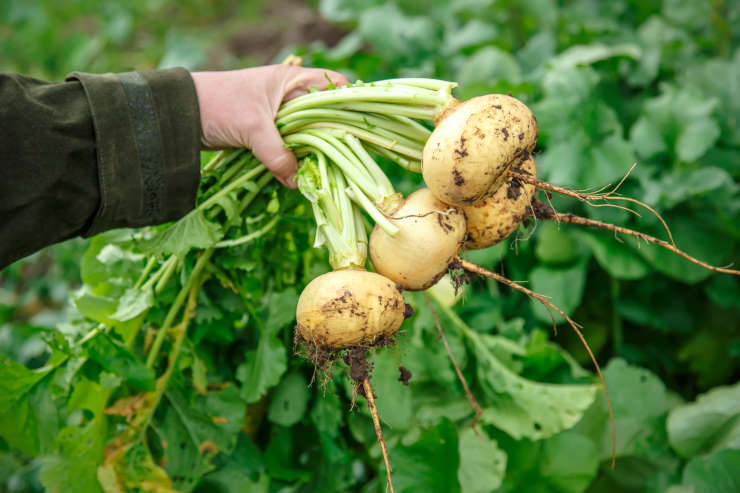
In the previous titles, we learned how to grow turnips from seed and the best way to do it. Some factors that affect timing are worth knowing, such as sunlight, type of turnip, soil, and more. Generally, it takes 6 to 10 weeks but it depends on the type, too. Some types grow slowly, while standard ones grow quickly. It also depends on climate. Turnip loves receiving full sunlight, and this fastens the growing process.
If you want small turnips, harvest them after 30 days, but they will be really small – like 1 or maybe 2 inches (2-5 centimeters). Waiting at least 2 months is recommended to harvest the crop in the best shape and taste. Some types require 3 months. But the simple answer would be 2 months at least.
Months of Turnip
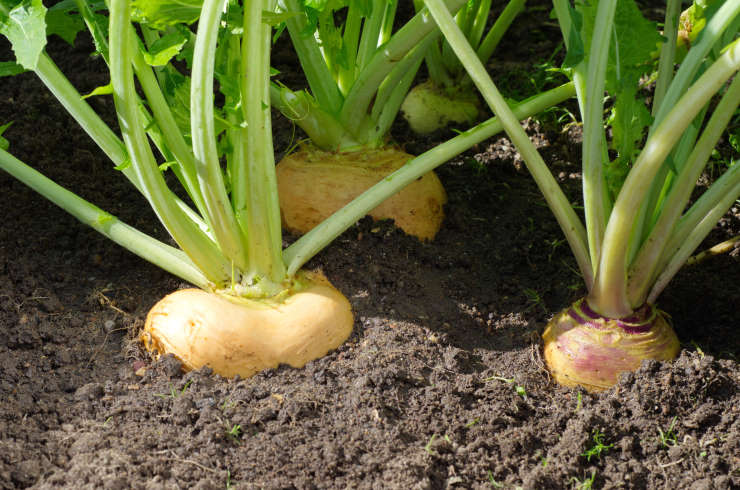
The month you choose will affect the seeds, so choosing the most suitable month would be good for your plant. Generally, early spring months, such as March and April, and late summer months, such as July and August, would be the best.
When you plant them in spring, you will harvest them in early summer. Late summer seeds would reach maturity in autumn. Calculating at least 2 months will help you. But, there is one thing you should be careful about: the hardiness zone. It affects the harvest time. Here is a little example:
- Hardiness Zone 5: March, April, and Early May
- Hardiness Zone 6: April, Late May, and July
- Hardiness Zone 7: Early February/August
Watering
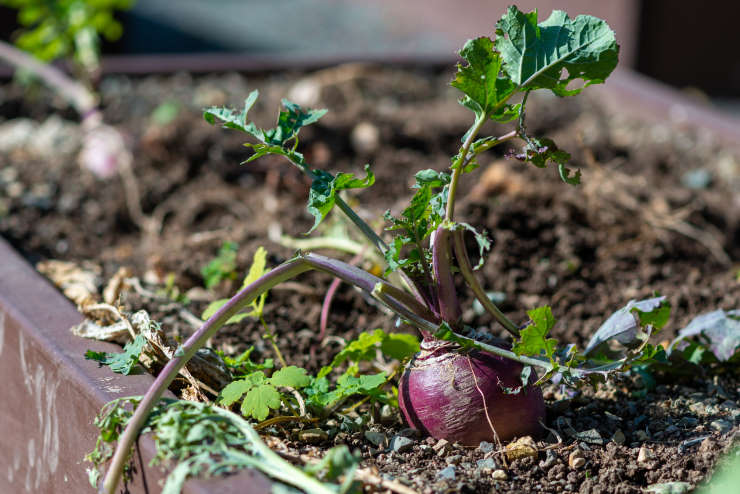
Watering is essential for this root vegetable. And to maintain healthy root development, giving 1 inch (2 centimeters) of water would be the best. It seems less, but enough for this plant. Overwatering will cause roots to be rotten and may attract pests or may cause diseases. Avoid giving too much water.
During the dry weather, you can give a little more water, but please be careful about waterlogging. Dry weather can cause plants to be small and slows the growing process. Sometimes, it even can cause flowering that will cause roots to swell. It can cause the death of the plant, too. Creating a regular watering schedule is recommended.
Soil
Soil is the life source of the plant as well as water, so it should be chosen carefully. Turnip likes slightly acidic soil. pH 6.0 and 6.5 would be the best to provide soil for them. Using rich, loose, and well-draining soil is also important. They need to absorb water from the soil directly, so well-draining soil will allow them to do this. Sandy soil can be used, too.
Rich soil will provide necessary nutrients to the plant, and being well-draining will help to plant reach water. If you don’t know your soil’s nutrients and pH, it’s easy to learn them. You can purchase the soil test kits. This will help make additions to the soil if needed. Moreover, it would be a good gift for beginners.
How to Harvest Turnip
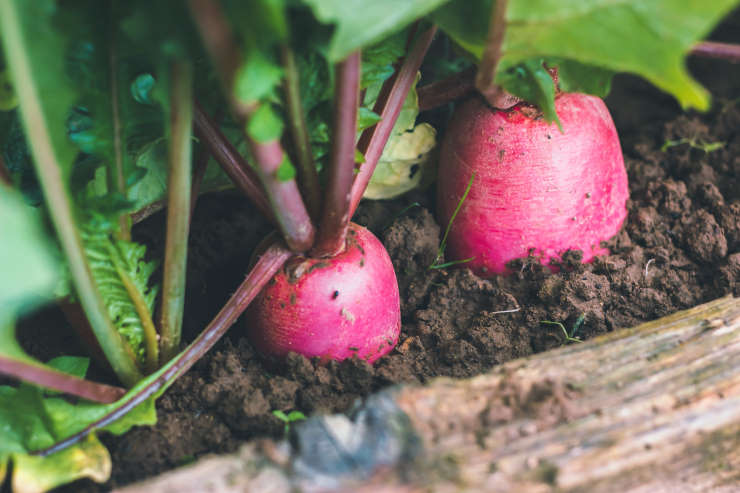
After planting and growing, it’s time to harvest your delicious plants. But how can you understand whether they are ready to be harvested or not? Don’t worry; turnip pushes themselves from the soil when they grow enough. You can see whether they are still small or big enough to be harvested easily.
They reach maturity generally after 2 months. To harvest, pulling gently will work. There is no special method to harvest them, you only need to pull. Loosening the soil by watering will soften the roots and would be good to pull plants without causing any harm. Don’t throw leaves away – they can be used to give some flavor to spicy salads.
Common Pests and Diseases
There are some common pests and diseases that affect turnips. To prevent them, you need to take precautions. Don’t forget to observe your plants, too. The cabbage aphid is an insect that causes the plant to die. It can be visible sometimes, so when you see any signs such as white webs. Being grey-green makes it harder to detect. If there is not a huge population of them, you can prune out infected leaves.
However, highly infected plants will need more serious actions. Alternaria leaf spot is a fungal disease that leaves yellow and black spots on the plant. Applying fungicides would be helpful. Wireworms are a huge problem for this plant. You need to check the soil before planting.
Conclusion
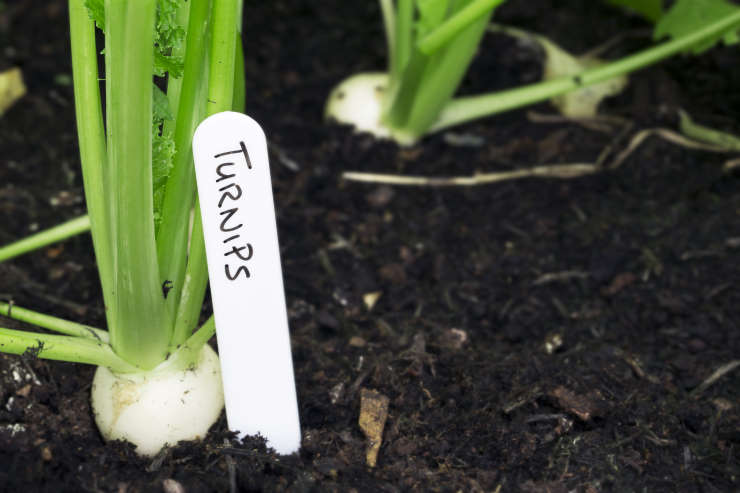
In conclusion, turnip is a root vegetable that is easy to grow. This feature makes it perfect for beginner gardeners. Except for pest or disease situations, it doesn’t need extra care. All you need to do is provide good soil and water regularly.
You will harvest it around 30-60 days on average. Please remember that the longer they grow, the bigger and tastier they will be. However, if you prefer spicy and small types, harvesting after 30 days is recommended.
You may also be interested in:


